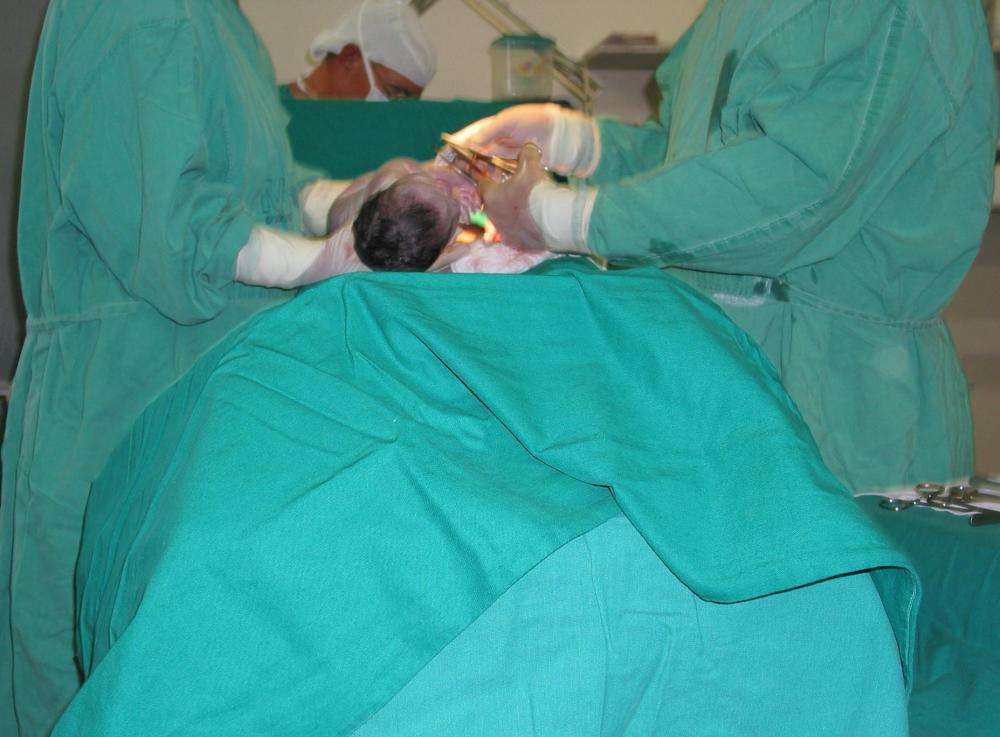At WiseGEEK, we're committed to delivering accurate, trustworthy information. Our expert-authored content is rigorously fact-checked and sourced from credible authorities. Discover how we uphold the highest standards in providing you with reliable knowledge.
What is a Fontanelle?
A fontanelle, or fontanel, is what is commonly referred to as a soft spot on an infant’s head. We most often think of the area just above the forehead as being a baby’s soft spot. Actually humans have several fontanelles, one in the front, one in the back, and several on the sides of the skull.
The purpose of these fontanelles is to facilitate easier passage of the infant’s large head through the birth canal. Instead of being completely made of bone, there are large areas of thick connective tissue covered by a membrane that will eventually close as the skull forms more bone. They help the baby’s head conform to the size of the birth canal by being much more flexible than bone would be. Once a baby is born, theses fontanelles take several months to several years to close completely, though you may notice the frontal one closing after the first few months of life.

The presence of the frontal and occipital fontanelle membranes (front and back) accounts for why babies may sometimes be born with misshapen heads. Spending a long time in the birth canal can cause a baby to have a cone shaped head when first born. In the next few weeks, the head will gradually resize to a rounder more expected shape. Typically, babies delivered by cesarean section tend to have rounder, more regularly shaped heads since they did not enter the birth canal.

There’s a lot of concern about the large front fontanelle and injury to the baby’s head in its first few years of life. In general, the tough membrane there does protect a baby who falls, though an extreme blow to the head could cause excessive injury. Such injury is unlikely, and even when children begin walking (around the age of one) their large fontanelle is not fully closed. Children learning to walk do have plenty of tumbles and emerge, in most cases, unscathed, or with minor injury only.

Doctors may use analysis of the front fontanelle to assess a baby’s health. If a baby is not getting enough to eat or is suffering from a stomach virus, the front fontanelle may have a “sunken in” appearance that indicates the baby is dehydrated. This diagnostic technique becomes less and less useful the older a child gets.
Plenty of animals have various fontanelle configurations. Lots of mammals are born with heads that are typically larger in scale than the rest of their bodies. The necessity of passing through the birth canal means that a completely bony skull could cause complications or result in death or injury to both mother and infant in a variety of animal species. These membranous connections between the bones of the head thus represent a key to many animals, including humans surviving the birth process.
AS FEATURED ON:
AS FEATURED ON:















Discussion Comments
@anon350322: Dehydration causes tissues to shrink because there is not enough moisture to maintain their shape and form. Since the tissues are shrinking, they would also do so around the fontanelle, which would cause it to sink.
We know fontanelles are sunken due to dehydration. By what mechanism is it sunken? How does dehydration sink the fontanelle? Please help?
Do reptiles have fontanelles?
For most babies, vaginal delivery is best, as the pressure naturally pushes amniotic fluid from the lungs and causes the natural chain of events that passively forces them to take their first breath.
It doesn't mean anything if a baby has two fontanelles. all babies have two 'major' fontenelles (one at the front of the head and one toward the back) and a couple of smaller ones.
Which is more beneficial to the infant, a vaginal or Caesarian?
what does it mean if you have two fontanelles?
what does it mean if the posterior fontanelle examined as flat and firm for a 5 months old baby?
What if a 3 month old baby hit his fontanelle on the bed side while pushing with his feet. Couldn't that pressure injure the fontanelle?
Post your comments